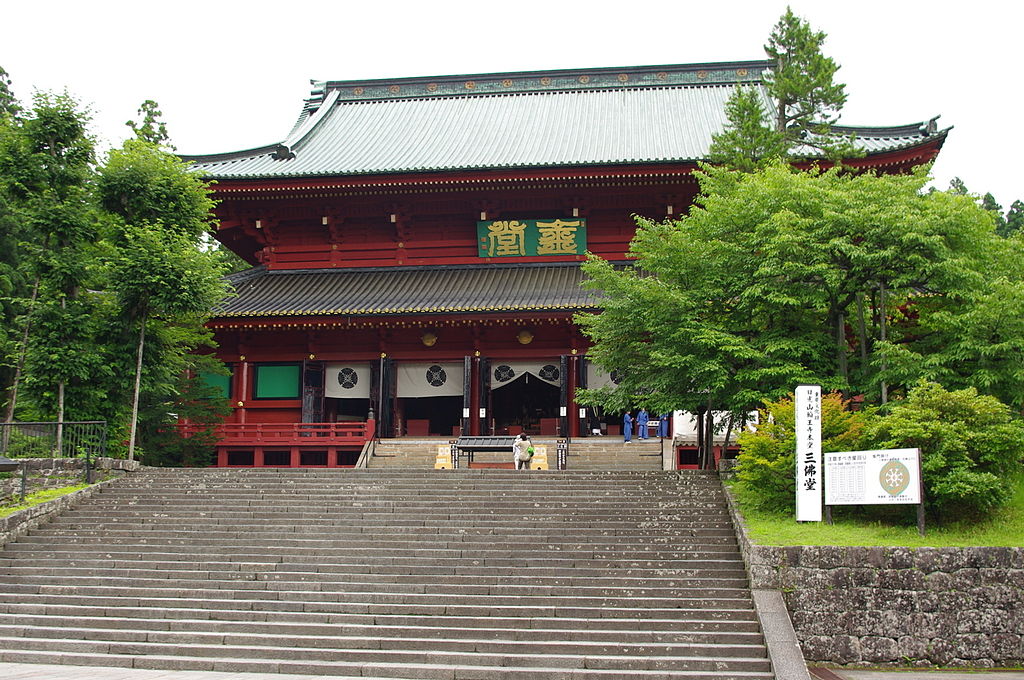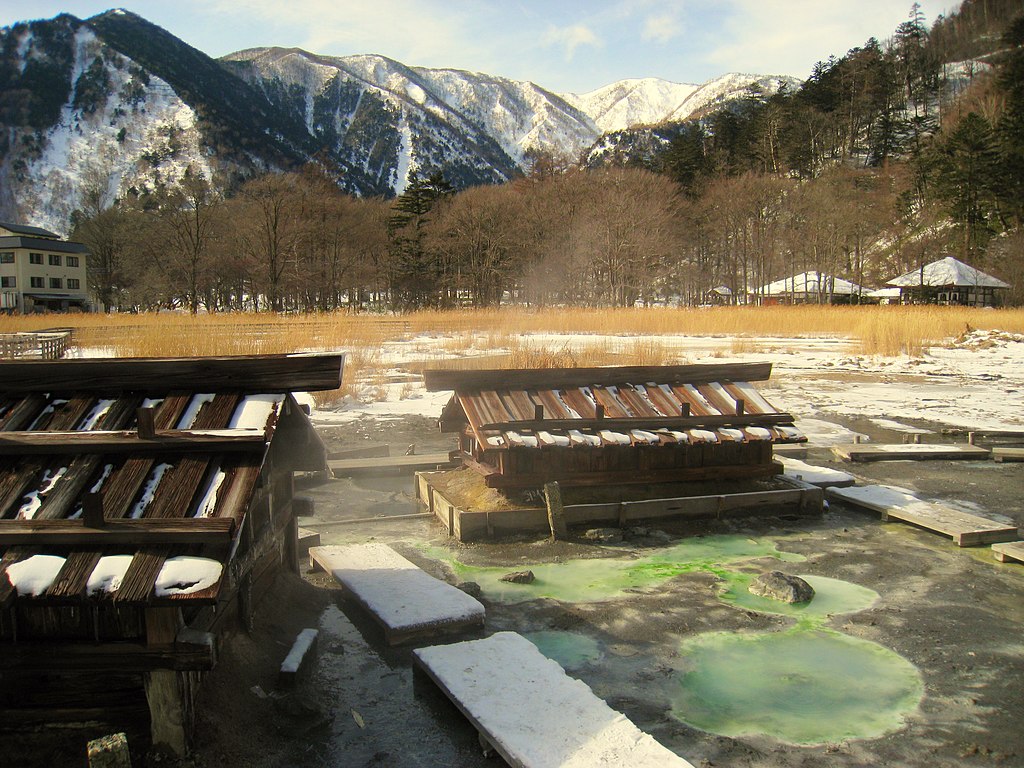What to do in Nikko
Nikko is famous for the mausoleum dedicated to the shogun Ieyasu Tokugawa, which employed thousands of craftsmen in its construction.
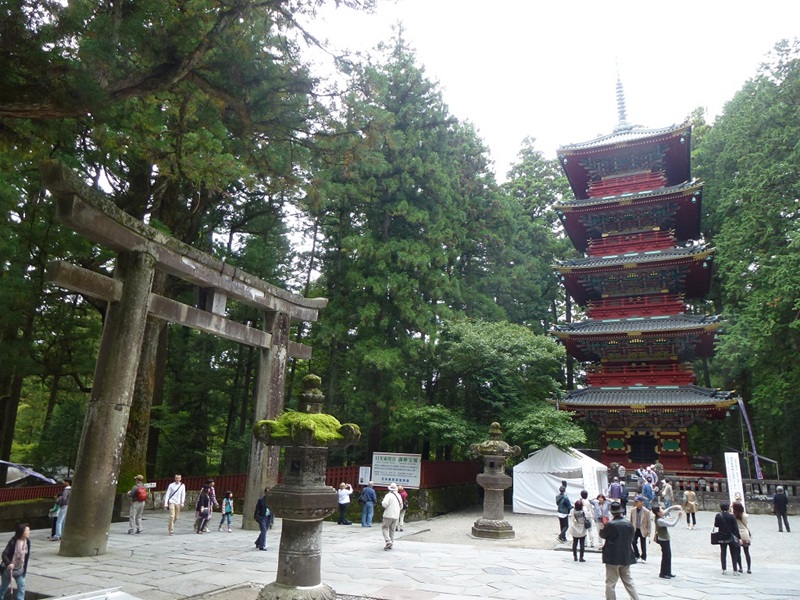
Photo by Japanforeveryone.com
Toshogu in Nikko is a majestic shrine dedicated to the founder of the Tokugawa shogunate, Tokugawa Ieyasu. It was built in the 17th century and is known for its superb architecture, detailed sculptures and rich decorations. The site has been designated a UNESCO World Heritage Site and is a popular tourist destination in Japan.
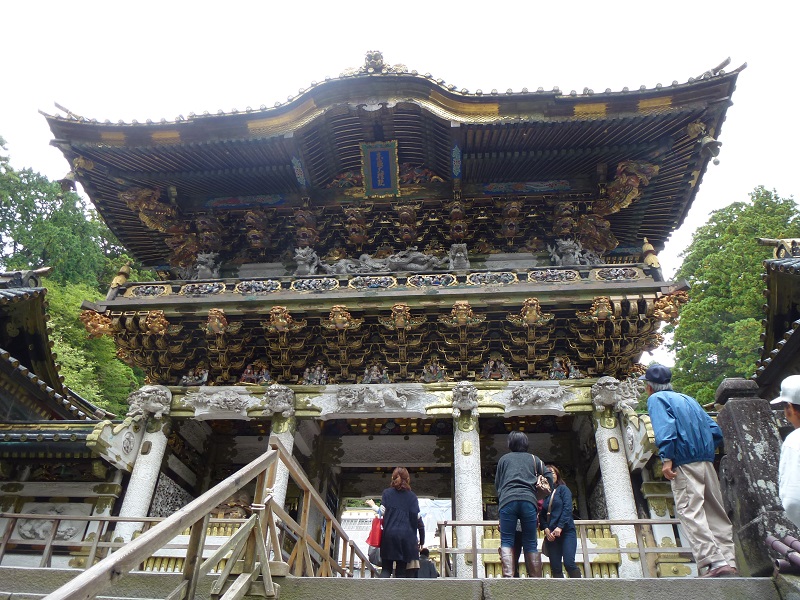
Photo by Japanforeveryone.com
Practical information
| View location on Google Maps | |
| Official website |
|
| 9:00-17:00 (until 16:00 from November to March) Last admission 30 minutes before closing |
|
| No closing days | |
| 1600 Yen (shrine) 1000 Yen (museum) 2400 Yen (shrine and museum) |
|
| From JR and Tobu stations in Nikko walk 40 minutes on the main road, cross the bridge and go up the steps By bus from the train stations (10 minutes – 350 Yen) |
The Taiyuinbyo Shrine, also known as the Iemitsu Mausoleum, is an important temple located in Nikko. Built in honour of Tokugawa Iemitsu, the third shogun of the Edo period, this shrine is famous for its beautiful architecture and serene ambience. Visitors can admire the intricate details of the sculptures and paintings in the complex. This shrine offers a unique experience of immersing oneself in Japanese history and appreciating the art and architecture typical of the Edo period.
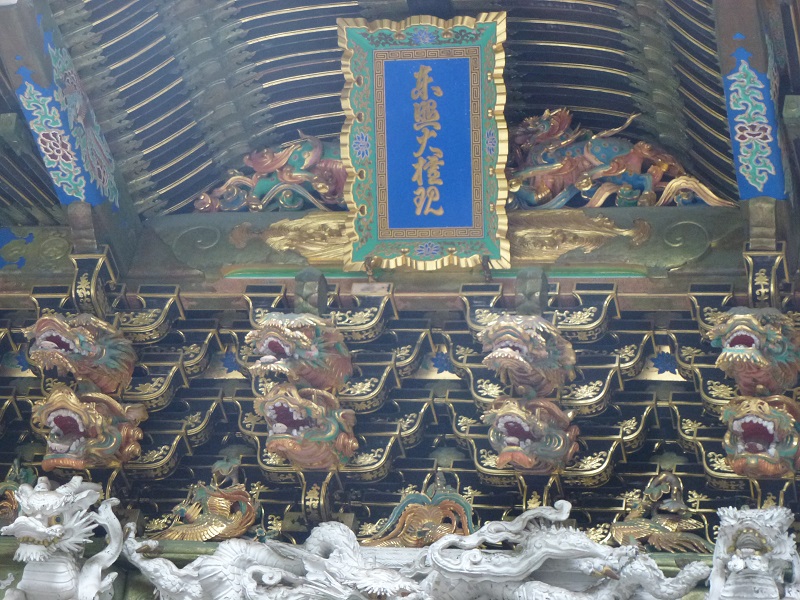
Photo by Japanforeveryone.com
Practical information
| View location on Google Maps | |
| Official website |
|
| 8:00-17:00 (until 16:00 from November to March) Last admission 30 minutes before closing |
|
| No closing days | |
| 550 Yen (Taiyuin only) 900 Yen (Taiyuin and Rinnoji) |
|
| From JR and Tobu stations in Nikko walk 40 minutes on the main road, cross the bridge and go up the steps By bus from the train stations (10 minutes, 350 Yen) |
The Rinnoji Temple in Nikko is an important Buddhist place of worship. Founded in the 9th century, it is one of Nikko’s main temples and a UNESCO World Heritage Site. Rinnoji houses a number of buildings, including the main Sanbutsudo Hall, which houses three Buddha statues. With its intricate architectural details and precious cultural treasures, the temple offers an extraordinary spiritual and cultural experience. Nestled in the lush nature of the Nikko mountains, the Rinnoji temple is a must-see for those visiting this historic Japanese city.
User: Bgabel at wikivoyage shared, CC BY-SA 3.0, via Wikimedia Commons
Practical information
| View location on Google Maps | |
| Official website |
|
| 8:00-17:00 (until 16:00 from November to March) Last admission 30 minutes before closing |
|
| No closing days | |
| 400 Yen 900 Yen (Rinnoji and Taiyuin) 300 Yen (Treasure House and Shoyoen Garden) |
|
| From JR and Tobu stations in Nikko walk 40 minutes on the main road, cross the bridge and go up the steps By bus from the train stations (10 minutes, 350 Yen) |
Imperial Villa Tamozawa
The Tamozawa Imperial Villa in Nikko is a historic residence that belonged to the Japanese Imperial family. Built in 1899, the villa is a mix of Japanese and Western architecture, with beautiful traditional Japanese gardens. The villa has been converted into a museum open to the public, where visitors can admire the elegantly furnished interiors and learn more about the history of the imperial family. The structure is a national treasure of Japan and offers a unique perspective on the royal life of the Japanese emperors. A visit to the Tamozawa mansion is a true immersion into the history and culture of Japan.
Fabimaru, CC BY-SA 4.0, via Wikimedia Commons
Practical information
| View location on Google Maps | |
| Official website |
|
| 9:00-17:00 (until 16:30 from November to March) Last admission at 16:00 |
|
| Tuesday (or the following day if Tuesday is a national holiday) 29 December to 1 January |
|
| 600 Yen | |
| From JR and Tobu stations in Nikko walk 50 minutes on the main road By bus from the train stations (10 minutes, 350 Yen) The villa is a 20-minute walk from the Toshogu |
Futarasan Shrine
The Futarasan shrine in Nikko is an important religious site dating back to the 9th century. This shrine, dedicated to the Sacred Mountains of Nikko, is known for its tranquil atmosphere and fascinating architecture. Visitors can admire the dark towers and decorative details of the buildings, surrounded by breathtaking natural surroundings. The Futarasan shrine is also famous for its festivals, where people wear traditional clothes and participate in fascinating processions. It is a must-see place for those wishing to immerse themselves in the spirituality and beauty of Nikko.
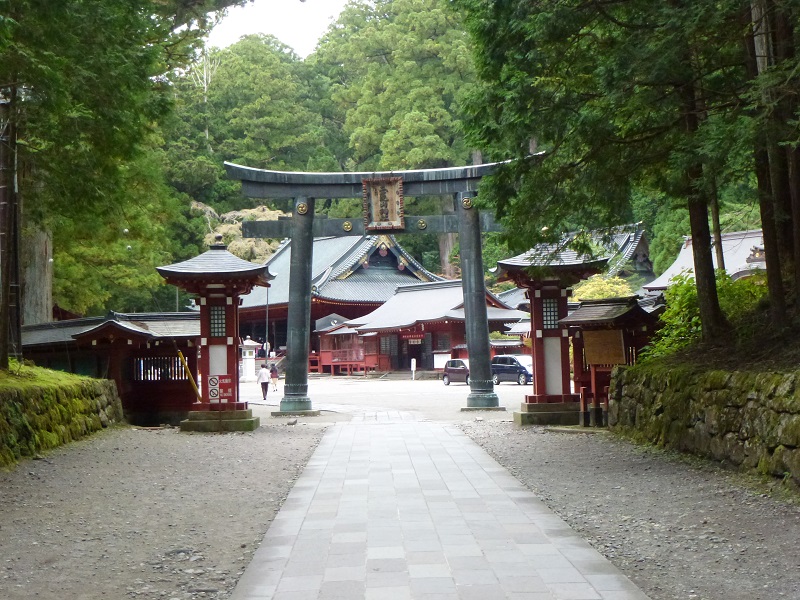
Photo by Japanforeveryone.com
Practical information
| View location on Google Maps | |
| Official website |
|
| 8:00-17:00 (until 16:00 from November to March) | |
| No closing days | |
| 300 Yen | |
| From JR and Tobu stations in Nikko walk 40 minutes on the main road, cross the bridge and go up the steps By bus from the train stations (10 minutes, 350 Yen) |
Kanmangafuchi Abyss
The Kanmangafuchi Abyss in Nikko is a fascinating and unique place that attracts visitors from all over the world. It is a deep gorge formed by the Daiya River, which flows through volcanic rocks. What makes this place so special are the 70 statues of Jizō, the Buddhist deities, that can be found along the path that runs alongside the abyss. These statues, made of basalt, are of different sizes and shapes, creating a breathtaking view. The walk along the Kanmangafuchi abyss is a memorable experience and a way to appreciate the nature and spirituality of Nikko.
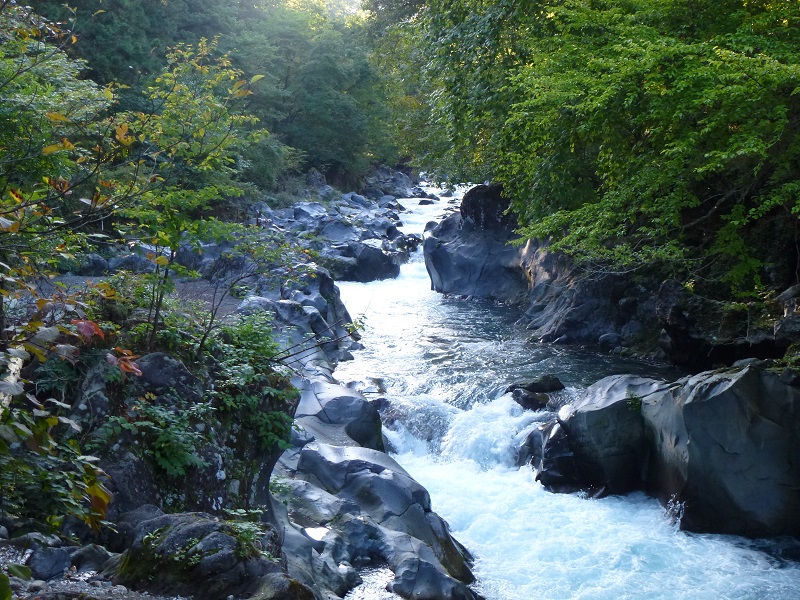
Photo by Japanforeveryone.com
Practical information
| View location on Google Maps | |
| 55 minutes walk from the train stations By bus get off at the Tomozawa bus stop (10 minutes, 350 Yen), from here it takes 15 minutes to reach the abyss, passing through a residential area |
Botanical Garden
The Nikko Botanical Garden is a natural wonder that attracts visitors from all over the world. Located in Japan’s Tochigi Prefecture, this garden is famous for its vast collection of rare and exotic plants. Covering an area of over 540 hectares, it offers visitors the opportunity to immerse themselves in the beauty of nature. Well-maintained paths lead through a variety of habitats, including mountain and forest environments. In addition to plants, the Nikko Botanical Garden is also the perfect place to admire the beautiful waterfalls and enjoy a peaceful walk. It is truly a treasure trove of natural treasures.
Daderot, Public domain, via Wikimedia Commons
Practical information
| View location on Google Maps | |
| Official website |
|
| 9:00-16:30 Last entry 30 minutes before closing time |
|
| Monday (or the following day if Monday is a national holiday) 1 December to 14 April |
|
| 500 Yen | |
| From JR and Tobu stations in Nikko walk 50 minutes on the main road By bus from the train stations (10 minutes, 350 Yen) The garden is a 20-minute walk from the Toshogu, near the Tamozawa villa |
Shinkyo Bridge
The Shinkyo Bridge is an iconic symbol of the city of Nikko, Japan. This red bridge was originally built in 1636 and, according to legend, was only used by priests when crossing the river from the temples of Nikko. It is now open to visitors, who can admire its architectural beauty and the view of the crystal-clear waters of the Daiya River. The Shinkyo Bridge is an important tourist and cultural attraction for Nikko, with thousands of visitors crossing it every year and appreciating its history and unique charm.
NOTE: the bridge can be admired from the nearby road bridge, without the need to pay an entrance fee to climb onto it.
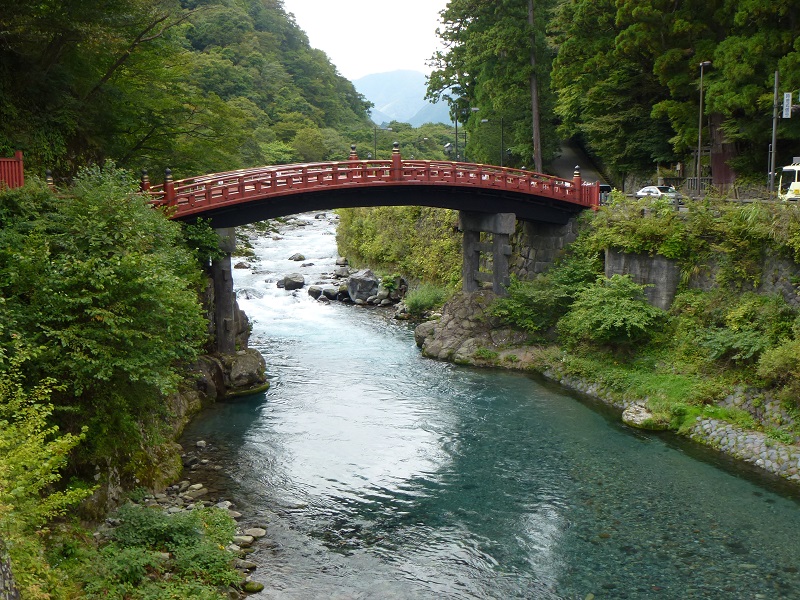
Photo by Japanforeveryone.com
Practical information
| View location on Google Maps | |
| Official website |
|
| 8:00-17:00 (April to September) 8:00-16:00 (October to mid-November) 9:00-16:00 (mid-November to March) |
|
| No closing days | |
| 300 Yen | |
| From JR and Tobu stations in Nikko walk 30 minutes on the main road By bus from the train stations (10 minutes, 200 Yen) |
Chuzenji Lake
Lake Chuzenji, also known as Chuzenjiko, is one of the main natural attractions in Nikko, Japan. Located on the slopes of Mount Nantai, this volcanic lake offers spectacular views and a pleasant oasis of tranquillity. Surrounded by lush mountains and imposing peaks, Lake Chuzenji is an ideal place to enjoy unspoilt nature. Visitors can take a walk along its shores, admire the majestic Kegon waterfalls and even take a cruise to admire the view from a different perspective. Lake Chuzenji is an unforgettable experience for nature lovers and those seeking peace and serenity.
そらみみ, CC BY-SA 3.0, via Wikimedia Commons
Practical information
| View location on Google Maps | |
| From the train station take the bus to the lake (50 minutes, 1250 Yen) |
Yumoto Onsen
Yumoto Onsen is a renowned spa resort located in the mountainous Nikko region of Japan. This charming village is known for its natural hot springs, which boast an ancient tradition of healing and relaxation.
This picturesque area is surrounded by unspoilt nature and offers a variety of activities and experiences for visitors. Among the main attractions of Yumoto Onsen are hikes on mountain trails, which offer breathtaking views.
The relaxing atmosphere and historical charm of Yumoto Onsen make it an ideal place for those seeking an escape from the stresses of everyday life. Here you can soak in traditional hot springs, visit ancient temples and enjoy delicious local dishes.
If you are looking for an authentic Japanese onsen experience, Yumoto Onsen is definitely worth considering during your visit to Nikko.
Daderot, Public domain, via Wikimedia Commons
Practical information
| View location on Google Maps | |
| From Tobu train station take the bus (80 minutes, 1950 Yen) |
Senjogahara Marsh
The Senjogahara marsh in Nikko, Japan, is a hidden gem surrounded by lush forest. Covering more than 350 hectares, this swamp offers a unique experience of immersion in nature. It is famous for its crystal-clear waters and a wide variety of flora and fauna. Visitors can take scenic trails through the swamp, immersing themselves in the tranquillity and beauty of the landscape. An excursion to Senjogahara offers the opportunity to observe birdwatchers and admire plant species typical of a wetland environment. Senjogahara is truly a natural wonder not to be missed when visiting Nikko.
Miguel Vieira from Walnut Creek, CA, USA, CC BY 2.0, via Wikimedia Commons
Practical information
| View location on Google Maps | |
| From Nikko train station take the bus (70 minutes, 1700 Yen)
The marsh is located between Lake Chuzenji and Yumoto Onsen |

